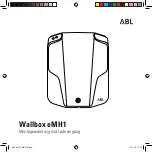
TIRE PRESSURE MONITOR SYSTEM (TPMS)
The Tire Pressure Monitor System (TPMS) will warn the
driver of a low tire pressure based on the vehicle recom-
mended cold placard pressure.
The tire pressure will vary with temperature by about
1 psi (6.9 kPa) for every 12°F (6.5°C). This means that
when the outside temperature decreases, the tire pressure
will decrease. Tire pressure should always be set based
on cold inflation tire pressure. This is defined as the tire
pressure after the vehicle has not been driven for at least
three hours, or driven less than 1 mile (1.6 km) after a
three hour period. The cold tire inflation pressure must
not exceed the maximum inflation pressure molded into
the tire sidewall. Refer to “Tires – General Information”
in “Starting and Operating” for information on how to
properly inflate the vehicle’s tires. The tire pressure will
also increase as the vehicle is driven - this is normal and
there should be no adjustment for this increased pres-
sure.
The TPMS will warn the driver of a low tire pressure if
the tire pressure falls below the low-pressure warning
limit for any reason, including low temperature effects
and natural pressure loss through the tire.
The TPMS will continue to warn the driver of low tire
pressure as long as the condition exists, and will not turn
off until the tire pressure is at or above the recommended
cold placard pressure. Once the low tire pressure warn-
ing (Tire Pressure Monitoring [TPM] Telltale Light) illu-
minates, you must increase the tire pressure to the
recommended cold placard pressure in order for the TPM
Telltale Light to turn off. The system will automatically
update and the TPM Telltale Light will turn off once the
system receives the updated tire pressures. The vehicle
may need to be driven for up to 20 minutes above 15 mph
(25 km/h) in order for the TPMS to receive this informa-
tion.
424
STARTING AND OPERATING
Summary of Contents for 2011 1500
Page 3: ......
Page 6: ...1 INTRODUCTION 5...
Page 9: ......
Page 142: ...Fast Tone Continuous Tone 3 UNDERSTANDING THE FEATURES OF YOUR VEHICLE 141...
Page 205: ...INSTRUMENT CLUSTER BASE 204 UNDERSTANDING YOUR INSTRUMENT PANEL...
Page 206: ...INSTRUMENT CLUSTER PREMIUM 4 UNDERSTANDING YOUR INSTRUMENT PANEL 205...
Page 298: ...Operating Tips 4 UNDERSTANDING YOUR INSTRUMENT PANEL 297...
Page 299: ......
Page 369: ...Understanding The Features Of Your Winch Winch Components 368 STARTING AND OPERATING...
Page 411: ...410 STARTING AND OPERATING...
Page 485: ...Jack and Tools 1500 Series Jack and Tools 2500 3500 Series 484 WHAT TO DO IN EMERGENCIES...
Page 487: ...Folding Flap and Rolling Bag Tying Bag to Jack with Straps 486 WHAT TO DO IN EMERGENCIES...
Page 513: ......
Page 591: ......
Page 602: ...INDEX 10...
















































